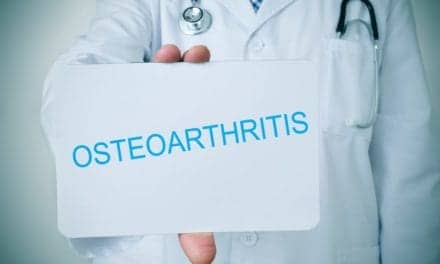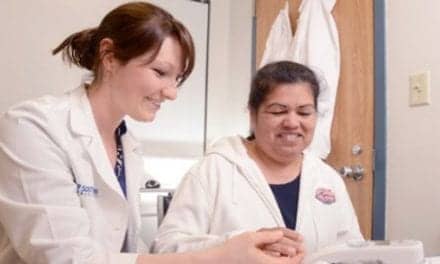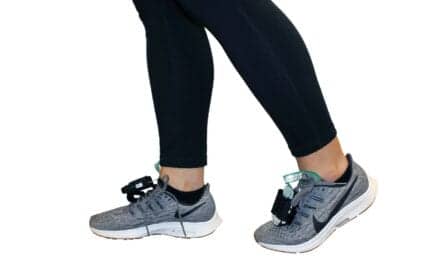By Mike Studer, PT
The epidemic of falls is a national health crisis in the United States. The economic and societal impact of falls is far-reaching, through the direct healthcare expenses incurred in the emergency, acute, and rehabilitative care after a fall; as well as the indirect expenses through care-giving (including missed work) and inactivity (furthering comorbidities and disability) costs of fall prevention. Medical and rehabilitative communities have been increasingly more attentive to fall prevention through screening measures, the science of balance rehabilitation, as well as the associated technological advancements affording the opportunity to individualize care in balance and fall prevention. In this article, we will cover “why, who, what, and how” of balance and fall prevention, beginning with a review of the significance from a social, economic, and health perspective—the “why”—the most at-risk or target populations—the “who”—the most recent clinical discoveries—the “what”—and finally, technological advances—the “how.”
Why
The statistics regarding falls are staggering. It is estimated that one-third of the US population older than 65 years of age will fall each year, leading to more than $30 billion in direct (injurious) and indirect medical costs.1 Preventing one fall can save tens of thousands of dollars, as we understand that the average cost for a fall-induced hospitalization is more than $35,0001; with many falls leading to thousands of dollars spent in the emergency department or urgent care.2,3 Medical costs are only part of the “why” picture. People at high risk for falling often compensate or alleviate their fears with reduced activity, thereby increasing their likelihood of falling when they do move (deconditioning, flexibility, reaction times affected) and increasing their healthcare needs (comorbidities that are exacerbated by inactivity, such as COPD and CHF). Finally, the socioeconomic impact of falls from missed work for care-giving, supervision, and transportation is a consideration in the equation stating the “why” in the case of a fall’s impact.
Who
Preventing falls is becoming an increasingly more sophisticated science, one that involves accurate screening to allocate rehabilitative and technological resources accurately. It would be ineffective, inaccurate, and inappropriate from a resource-utilization standpoint to attempt to engage everyone who is older than 65 years in a skilled physical therapy plan of care to prevent a fall. Accurate screening identifies the “who” among the most common groups of at-risk individuals, including persons with histories that include a short list of Parkinson’s disease, stroke, dementia, dizziness, vertigo, or those who have sustained an injurious fall within the past year.
While other conditions and comorbidities are significant, including diabetes, neuropathy, cancer, those taking more than five prescription medications, visual impairment, and chronic pain, a multifactorial screen proves to be more accurate than a chart or medication-list review alone.4 Many scientists have both proposed and proven the efficacy of sensitive falls-screening protocols. Many of the most precise tools include a combination of a functional assessment, a chart review (medical history and pharmaceutical review), as well as an examination of impairment-based items.
The National Falls Prevention Coalition has endorsed a tool for primary care practitioners, known as STEADI (Stopping Elderly Accidental Deaths and Injuries). The National Institutes of Health (NIH) and Centers for Disease Control and Prevention (CDC) have taken the topic of falls prevention headlong, and suggest screening through a collection of the Timed Up and Go (TUG), the 30-second chair stand test (CST), and the 4 Stage Balance Test—which includes tandem standing (TST) and one-legged stand (OLST or SLS).4-6 Accurately identifying “who” is most at risk for a fall is imperative to preserving resources in balance and fall prevention…so that we really do save dollars and lives.
What
While it is an overstatement to propose that the entire medical community has held the belief that, “falling is a natural sign of aging” or, “everyone falls due to weakness…we just need to get people stronger,” it is becoming increasingly less acceptable to take no action when a person is falling frequently.7 The science of balance and fall prevention is ever-advancing, leading to changes in the following aspects of rehabilitative practice: repetitions, feedback, task-specificity, motivation, (allowance of) error, and many more. We are now more astute at delivering a level or prescription/dosage of exercise that is individualized to the patient’s tolerance, capabilities, and goals.8 This article will cover some of the more intriguing changes to practice, including sensory retraining, dual tasking, obstacle avoidance, and perturbation tolerance.
Some of the most recent revelations specific to balance rehabilitation include therapists’ efforts to prescribe activities tailored to the type of sensory impairment that contributes to this person’s functional limitations. Many patients become dependent on vision to a dysfunctional level after vestibular or peripheral neuropathic changes, for example. Using virtual reality environments, computerized posturography, or wearable sensors—we can detect and treat patients’ visual dependence.9
Many people fall when they are distracted. Often, they fail to recognize the conflict or competition for attention altogether. Many fallers are incapable of fully focusing on their movement as related to a changing environment, or to recognize trip hazards as they move through an unfamiliar room. Dual task tolerance—both testing and building—is now a staple in geriatric and neurologic rehabilitation. Therapists have a growing number of tools available to measure a patient’s dual task cost and to begin to assign fall risk as a function of dual task intolerance. Rehabilitation of dual task capacities requires specificity for each involved modality or distractor: manual, visual, auditory, or cognitive.
Some falls are the result of a slip, or an incidental nudge in a crowd of pedestrians. To be most effective, therapists must stage practice that imitates lifelike circumstances. Recent research in perturbation training and somatosensory reweighting (often including efforts to reduce overdependence on vision) provides us with a more refined set of experiences to offer in rehabilitation, helping people react better through specific training.9
Additionally, the battle against the epidemic of falls has led to policy and practice changes, bringing us community-based fall-prevention programs that are both affordable and accessible. The most well-known and widely practiced of these—OTAGO10, Tai Chi, Stepping-On, and a Matter of Balance—are endorsed by the NIH and CDC fall-prevention action committee.5,6 We are coming to believe that many falls can be prevented through increased exercise and regular activity, as the OTAGO exercise program has shown. Technology is affording the opportunity for “distant monitoring” and telemedicine-based monitoring of activity through accelerometers and through interactive home exercise programming, such as available through Louisville, Ky-based Evidence in Motion’s product known as Reflexion Health Virtual Exercise Rehabilitation Assistant (VERA); PTPal’s home exercise module, and Nexercise, among others. The Balance System SD, by Biodex Medical Systems, Shirley, NY, made to improve balance, agility, and muscle tone, includes a Fall Risk Screening and Conditioning Program and Protocol to help clinicians begin a Fall Program.
HOW: Screening, Assessment, and Rehabilitation
How we begin to win the battle against falls is multifaceted—research-guided screening, clinical advancements, technology, promoting awareness, community programs—and more. We will briefly review the research, policy, technological, and social advancements leading the way in our battle against falls.
Research has led us to better screening tools such as the CDC-developed Stopping Elderly Accidental Deaths and Injuries (STEADI). STEADI is a comprehensive, primary care-based screening tool to screen and triage resources for fall prevention accordingly. This tool is becoming more widely disseminated through the use of apps, from Blue Marble Game Company and Evidence in Motion. Also noteworthy in this category would be the policy changes, including PQRS Medicare fall prevention measures, with financial incentives to conduct and document screening annually.

The psychological impact of falling and the fear of falling have been recognized and quantified for years with scales such as the Activity-specific Balance Confidence and the Fall Efficacy Scale. Treating and respecting this fear is increasingly more feasible through body weight-supported technologies.
The psychological impact of falling and the fear of falling have been recognized and quantified for years with scales such as the Activity-specific Balance Confidence (ABC) and the Falls Efficacy Scale (FES). Treating and respecting this fear is increasingly more feasible through body weight-supported technologies, used both over ground and over treadmills. Examples include unweighting apparatus systems such as the Rehab Harness by MASS Rehab, Englewood, Ohio; the LiteGait by Mobility Research; pneumatic unweighting through the AlterG by AlterG, Fremont, Calif; and overground systems such as the ZeroG by Ashburn, Va-based Aretech. Other technologies in this market built to address falls and fall risk include the SafeGait 360° Balance and Mobility Trainer from Gorbel Medical, Fishers, NY, with Patient Management Software built in to allow patient performance measures to be tracked and compared by task and session; the ceiling-mounted Solo-Step System by Sioux Falls, SD-based Solo-Step; and the Lokomat from Hocoma Inc, Norwell, Mass.
Technological advancements have brought tools to improve our objective analysis of gait, such as GaitRite for a quantitative overground analysis made by CIR Systems Inc, Sparta, NJ; the Zeno Electronic Walkway from Havertown, Pa-based ProtoKinetics; and GaitSens for an instrumented dynamic gait (and static standing) assessment, available through Tempe, Ariz-based Mobility Research. Additionally, we have benefited from advances yielding more detailed information on the relative sensory contributions in balance using Mobility Lab, manufactured by APDM, based in Portland, Ore, and the NeuroCom Balance Master from Natus Medical Inc, San Carlos, Calif. Each provide a visual representation for the subject/patient and the clinician in real time for training and testing purposes.
As noted above, the environment can contribute to some falls, due to any number of factors, including but not limited to cognitive decline, neuropathy, ataxia, hemiplegia, Parkinson’s disease, or visual impairment. Technology and research have afforded the evidence-based means to train patients to improve their environmental scanning, tolerance of a slip/trip, ability to sense movement more proximally in the face of neuropathy, etc. Virtual reality environments, video games, and apps are increasingly available and are specifically designed for rehabilitation. Those addressing some of these skills include therapeutic neuro-gaming software tools available through Blue Marble Games and Evidence in Motion’s Fall Prevention App, which is designed to quickly and easily screen older adult patients for fall risk and is based on the CDC’s STEADI tool. Perturbation training is also offered commercially through technologies such as the PROPRIO Reactive Balance System, built to generate perturbations through Dynamic Range of Motion (D-ROM) technology.
We can, through these technologies, provide a therapeutic challenge to a patient’s balance without making them fearful of injury in rehabilitation. In all, our medical community is slowly turning the stigma of falling (as we are with memory impairments) into an openly discussed healthcare agenda, thereby helping patients and families seek and expect help.
Conclusion
Through research, policy, and advancing technology, we are preventing falls in many ways that had not been possible just 5 years ago, primarily in the arenas of screening, clinical assessment, and rehabilitation. We hope to be able to say this again 5 years from now. As noted, research advancements in the field of balance and falls include improved sophistication in screening for fall risk and technological gains (apps and software) helping us to screen more people. Additionally, more people are reached every year through community-based activity and balance programs. These gains have the potential to be staggering when coupled with refined accuracy in detecting the type of imbalance that each person presents with—thereby affording us the best opportunity to accurately apply the science of balance rehabilitation. Finally, we utilize technological gains to help people overcome their fear of mobility that had been leading to more inactivity-based weakness.
Given the importance that fall prevention is being given, and the advances being made, this is the best decade to age yet. We should encourage those at risk to keep moving, and be better than ever at supporting their efforts to do so. PTP
Mike Studer, PT, is owner of Northwest Rehabilitation Associates in Salem, Ore, where he is also a treating physical therapist. Studer was honored by the American Physical Therapy Association as recipient of the organization’s 2014 award for Geriatric Clinical Excellence, and recognized with the APTA’s 2011 Neurology Section Award for Clinical Excellence, which the APTA presents to its Clinician of the Year. Currently, Studer serves as Chair of the APTA Geriatric Section Balance and Falls Special Interest Group. For more information, contact [email protected].
References
- Centers for Disease Control and Prevention. The Cost of Falls Among Older Adults. 2012. Available at: http://www.cdc.gov/homeandrecreationalsafety/falls/fallcost.html. Accessed July 12, 2015.
- Adams PE, Martinez ME, Vickerie JI, Kirzinger WK. Summary health statistics for the US population: National Health Interview Survey, 2010. Vital Health Stat 10. 2011;251:1-117.
- Centers for Disease Control and Prevention, National Center for Injury Prevention and Control, Division of Unintentional Injury Prevention and Control. Web-based Injury Statistics Query and Reporting System (WISQARS). Available at: http://cdc.gov/injury/wisqars. Accessed July 15, 2015.
- Avin KG, Hanke TA, Kirk-Sanchez N, et al. Management of falls in community-dwelling older adults: clinical guidance statement from the Academy of Geriatric Physical Therapy of the American Physical Therapy Association. Physical Therapy. 2015;95(6):815-834.
- Centers for Disease Control and Prevention, National Center for Injury Prevention and Control, Division of Unintentional Injury Prevention and Control.STEADI (Stopping Elderly Accidents, Deaths, and Injuries) Tool Kit for Health Care Providers. Available at: http://www.cdc.gov/homeandrecreationalsafety/falls/steadi/index.html. Accessed July 15, 2015.
- National Institutes of Health. Senior Health. Available at: http://nihseniorhealth.gov/falls/aboutfalls/01.html Accessed July 16, 2015.
- Fritz S, Lusardi M. Walking speed: the sixth vital sign. J Geriatri Phys Ther. 2009;32:2-5.
- International Classification of Functioning, Disability and Health (ICF). Geneva, Switzerland: World Health Organization; 2001.
- Horak F, King L, Mancini M. Role of body-worn movement monitor technology for balance and gait rehabilitation. Physical Therapy. 2015;95(3):461-470.
- Thomas S. Does the Otago Exercise Programme reduce mortality and falls in older adults? A Systematic review and meta-analysis. Age Ageing. 2010;39:681-687.






